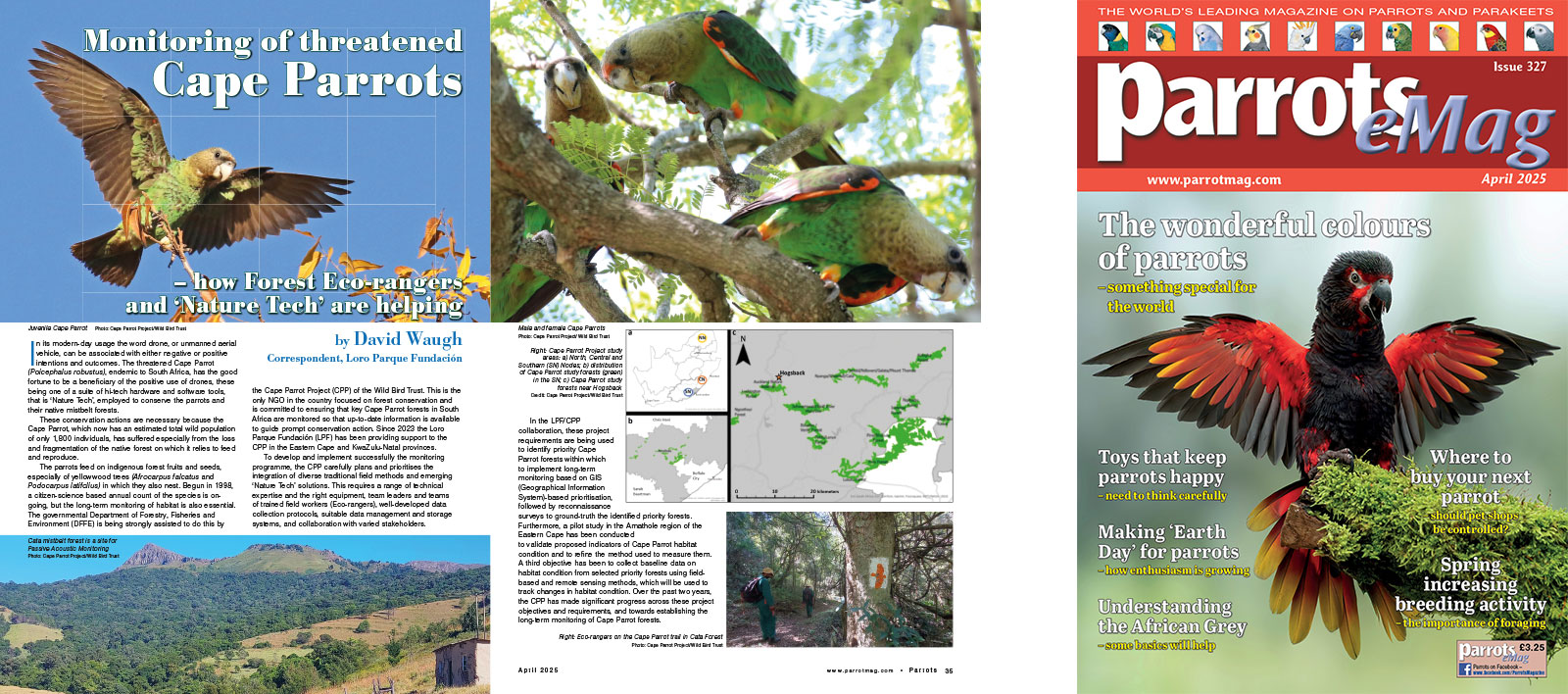
By David Waugh, Correspondent, Loro Parque Fundación
In its modern-day usage the word drone, or unmanned aerial vehicle, can be associated with either negative or positive intentions and outcomes. The threatened Cape Parrot (Poicephalus robustus), endemic to South Africa, has the good fortune to be a beneficiary of the positive use of drones, these being one of a suite of hi-tech hardware and software tools, that is ‘Nature Tech’, employed to conserve the parrots and their native mistbelt forests.
These conservation actions are necessary because the Cape Parrot, which now has an estimated total wild population of only 1,800 individuals, has suffered especially from the loss and fragmentation of the native forest on which it relies to feed and reproduce.
The parrots feed on indigenous forest fruits and seeds, especially of yellowwood trees (Afrocarpus falcatus and Podocarpus latifolius) in which they also nest. Begun in 1998, a citizen-science based annual count of the species is on-going, but the long-term monitoring of habitat is also essential. The governmental Department of Forestry, Fisheries and Environment (DFFE) is being strongly assisted to do this by the Cape Parrot Project (CPP) of the Wild Bird Trust. This is the only NGO in the country focused on forest conservation and is committed to ensuring that key Cape Parrot forests in South Africa are monitored so that up-to-date information is available to guide prompt conservation action. Since 2023 the Loro Parque Fundación (LPF) has been providing support to the CPP in the Eastern Cape and KwaZulu-Natal provinces.
